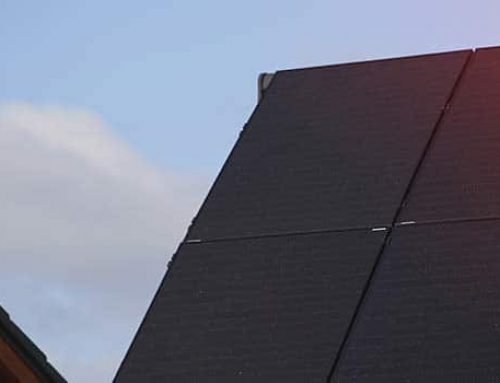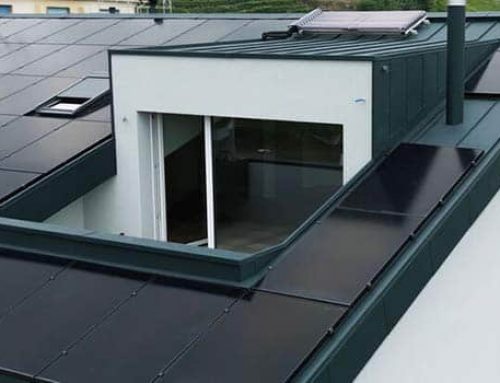Solar panels have become a popular choice for homeowners in Adelaide, thanks to the potential for substantial energy savings.
But there’s a catch.
Your system must be working optimally to deliver the full range of advantages on offer. And if you can’t measure solar panel output, you’ll be left in the dark and may miss out on energy production and savings.
Regularly testing your solar panel output is crucial. So, in this article, we’ll guide you through the process of testing solar panel output and empower you to make the most of your investment.
Looking to learn more? Explore our most popular resources:
Why Test Solar Panel Output?
Testing the output of your solar panels serves several purposes.
Firstly, it helps you identify any issues with the system’s performance, such as damaged panels or faulty inverters.
Regular testing also allows you to monitor whether your panels are generating the expected amount of energy based on their specifications and the amount of sunlight in your area.
Finally, keeping track of your solar panel output can help you detect any gradual decrease in performance over time, which might indicate the need for maintenance or cleaning.
Tools You’ll Need…
Solar Panel Monitoring System: Many modern systems come with built-in monitoring systems that allow you to track energy production. These systems often have online interfaces or smartphone apps that provide real-time data.
Energy Meter: An energy meter, also known as a wattmeter or power meter, measures the electricity produced by your panels. You can find digital energy meters at hardware stores.
Sunlight Data: To understand how much energy your panels should be producing, you’ll need information about the average sunlight hours in Adelaide. This data is usually available from weather websites or local authorities.
7 Simple Steps to Test Your Solar Panel Output
Step One – Gather Data: Obtain information about the average daily sunlight hours in Adelaide. This will serve as a benchmark for your solar panel’s expected output. Keep in mind that this value can vary throughout the year.
Step Two – Check Monitoring System: If your solar system has a monitoring system, log in to the online interface or app to check the real-time energy production data. Make note of any discrepancies between the expected output and the actual output.
Step Three – Prepare the Energy Meter: Connect the energy meter to a power outlet that is directly connected to your system. This will measure the energy produced by your panels.
Step Four – Turn Off Appliances: To get an accurate reading, ensure that no major appliances are running during the test. This will provide a clearer picture of how much energy your panels are generating without interference.
Step Five – Monitor Energy Production: Turn on the energy meter and monitor it for a specific period, ideally a full day. Note down the energy production at regular intervals throughout the day.
Step Six – Compare Results: Compare the energy production data from the monitoring system and the energy meter. If they align closely, your panels are likely to perform well. If there’s a significant discrepancy, it might indicate an issue with your system that needs professional attention.
Step Seven – Repeat Seasonally: Solar panel output can vary based on the season due to differences in sunlight hours. It’s a good idea to repeat this testing process during different seasons to ensure your panels are generating consistent energy year-round.
Maintaining and Enhancing Panel Performance
Ensuring the efficiency and longevity of your panels goes beyond just testing their output. Here are some additional steps you can take to maintain and enhance their performance:
1. Regular Cleaning and Maintenance
Adelaide’s climate can be unpredictable, with occasional storms and pollen accumulation. These environmental factors can obstruct sunlight and reduce the efficiency of your panels. To combat this, make it a routine to clean your panels. Gently wash them with a hose or use a soft brush to remove debris. Remember to turn off your panels and exercise caution while cleaning.
2. Trim Surrounding Trees and Obstructions
Shadows from trees, buildings, or other obstructions can significantly impact the performance of your panels. Regularly trim any overhanging branches or remove objects that cast shadows on your panels. This proactive step will ensure your panels receive maximum sunlight exposure throughout the day.
3. Monitor Inverter Performance
Inverters are essential components of your system as they convert the generated DC electricity into usable AC electricity. Monitoring your inverter’s performance is crucial. If you notice irregularities such as strange noises, error messages, or blinking lights, it’s a sign that your inverter might need attention.
4. Investigate Battery Storage
If you’re considering taking your system to the next level, think about incorporating battery storage. Battery systems allow you to store excess energy generated during the day for use during the night or on cloudy days. This can provide greater energy independence and potentially save you even more on your electricity bills.
5. Professional Inspections
While regular DIY checks are valuable, it’s advisable to schedule professional inspections at least once a year. The technicians have the expertise to identify issues that might not be immediately apparent to an untrained eye. They can perform detailed diagnostics, wiring checks, and overall system assessments to ensure everything is in optimal working condition.
6. Stay Informed
Solar technology is continually evolving, and staying informed about advancements and new maintenance practices can be beneficial. Follow industry news, attend workshops, and participate in online forums to gain insights from fellow panel owners and experts.
Bonus: When to Seek Professional Help
While regular testing can provide valuable insights, some issues might require professional assistance. If you notice a sudden and drastic drop in energy production, if your monitoring system consistently shows low output, or if you suspect physical damage to your panels, it’s best to contact your local technician. Our professional team at Energy Buster has the expertise to diagnose and fix complex issues effectively.
Reach out on (08) 7120 6377 for more information or support.
Test Your System’s Output With Confidence
To truly reap the rewards of a residential or commercial system, it’s vital to ensure your panels are performing optimally.
Regular testing, cleaning, and professional inspections are key components of this maintenance journey. By following the steps outlined in this article, you’re not only maximising your energy savings but also contributing to a sustainable future.
While testing the output of your solar panels in Adelaide is a straightforward task, consider reaching out for professional support to help deliver the most accurate results while saving time.
Learn more by reaching out on (08) 7120 6377 or request an obligation-free quote online today.





![How to Monitor Solar Panel Output for Your Adelaide Home or Business [Simple Guide]](https://energybuster.com.au/wp-content/uploads/2023/09/How-to-monitor-solar-panel-output-in-Adelaide-01-500x383.jpg)
